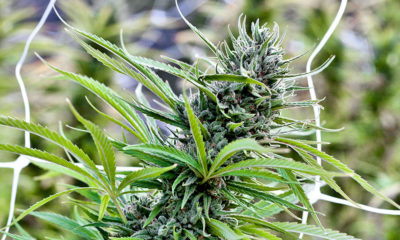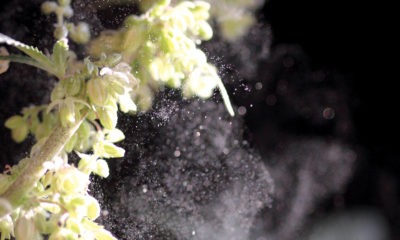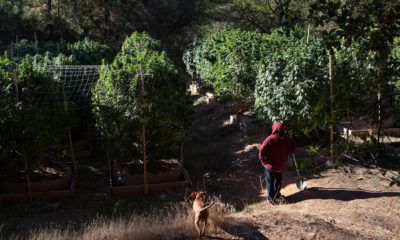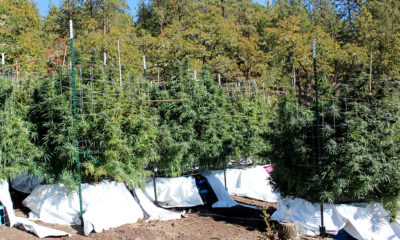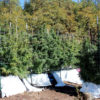
Cultivation
Origins of Cannabis: Plant Was First Domesticated 12,000 Years Ago
Researchers investigating the origins of cannabis have determined that the plant was first domesticated in what is now northwestern China about 12,000 years ago. The findings also contradict the commonly held belief that the plant originated in the Hindu Kush region of Central Asia.
Researchers investigating the first domestication of cannabis have determined that the plant was originally cultivated in what is now northwestern China, according to a recently released study published in the journal Science Advances. The team of researchers investigating the origins of cannabis analyzed the genomes of more than 100 cannabis plants from around the world to conduct the study.
“It confirms it is one of the oldest cultivated plants,” said Luca Fumagalli, a biologist working at the University of Lausanne in Switzerland, who led the study. “We think it was a multipurpose plant. It was exploited for fiber, food and oil, and possibly medical and recreational purposes,” he said.
The research contradicts the commonly held belief that cannabis originated in Central Asia, perhaps in valleys of the Hindu Kush mountain range. The study determined that there are four genetically distinct categories of cannabis including a primordial group, a hemp group, and two groups bred for drugs. The researchers concluded that the first domestication of cannabis occurred in northwest China about 12,000 years ago, and that the plants cultivated likely had multiple uses.
“We show that cannabis sativa was first domesticated in early Neolithic times in East Asia and that all current hemp and drug cultivars diverged from an ancestral gene pool currently represented by feral plants and landraces in China,” the study reads.
A Global Sample of Cannabis Strains
To conduct the research, Fumagalli and investigators from Britain, China, India, Pakistan, Qatar and Switzerland analyzed the genomes of 82 plants collected for the study and genomic data for 28 more plants that had been previously collected. The 110 plants included landrace strains, feral plants, historical cultivars and modern hybrids.
The researchers determined that the wild ancestor of modern cannabis is likely extinct, but strains growing in northwest China are its closest living relatives. The genomic dating of about 12,000 for the first domestication of cannabis is consistent with archaeological evidence, including pottery with hemp cord markings from about the same time.
“Our genomic dating suggests that early domesticated ancestors of hemp and drug types diverged from Basal cannabis [around 12,000 years ago], indicating that the species had already been domesticated by early Neolithic times,” the study adds.
The study into the origins of cannabis also determined that farmers began breeding distinct strains of cannabis for drug or fiber production only about 4,000 years ago. The researchers identified several changes brought about by selective breeding, including a number of mutations that inhibit branching in hemp strains. These mutations cause the plants in the hemp genetic group to grow taller and produce more fiber in the stem.
The first domestication of cannabis cultivars for drug production took advantage of mutations that increase branching, resulting in shorter, bushier plants with more flowers and boosted resin production. Plants in the drug groups also showed several mutations that increase the production of THC, the primary psychoactive cannabinoid in cannabis.
Previous research into the origins of cannabis cultivation has been limited due to the difficulty in obtaining a wide range of samples from around the world. The new study included samples collected by researchers from the wild, as well as strains being cultivated by farmers around the globe. But geographic challenges were not the only obstacle to collecting plants for the genetic research – investigators also had to keep the legal implications of possessing cannabis in mind.
“You can’t just go and collect samples because you go to jail,” Fumagalli said.
Research Implications
The study contradicts the belief that cannabis originated in Central Asia, which is based largely on the fact that the plant can often be found growing wild in the region, which also has a cannabis culture dating back thousands of years. But Fumagalli said that the plant readily adapts to growing conditions found all over the world, adding “That’s why it’s called weed.”
The researchers determined that the genomic study and other evidence suggests that the origins of cannabis lie farther east and discounted the commonly held belief.
“Contrary to a widely-accepted view, which associates cannabis with a Central Asian center of crop domestication, our results are consistent with a single domestication origin of cannabis sativa in East Asia, in line with early archaeological evidence,” the authors of the study wrote.
The authors wrote that the study provides an “unprecedented” base of genomic information for ongoing breeding, as well as functional agricultural and medical research. They added that the study “provides new insights into the domestication and global spread of a plant with divergent structural and biochemical products at a time in which there is a resurgence of interest in its use, reflecting changing social attitudes and corresponding challenges to its legal status in many countries.”



